Audi presents the updated variant of the electric sports car e-tron GTwith many features that debuted on the redesign Porsche Taycan. The new versions have been improved especially on theautonomyfrom the performancefrom the recharge and vehicle handling. The version also makes its debut in the range RS e-tron GT performance with 925 HPAudi’s first fully electric RS model.
New Audi e-tron GT, what changes in the restyling
The restyling of the 2024 Audi e-tron GT introduces numerous aesthetic changes. The new black frame surround the single frame with a honeycomb design, connecting with the side air intakes. A band in body color extends between the grille and the bonnet, and a similar solution is adopted at the rear with theextractor equipped with vertical ribs and matching upper profile.
The performance version of the RS e-tron GT presents elements in matte carbon on the roof and other details in carbon camouflage on front air vents, doors, extractor and mirror caps.
The entire range adopts the new Audi logo design two-dimensional of the four rings – in polar white for the S e-tron GT and in anthracite gray for the RS variants – and the model designation with Audi lettering on the B pillars.

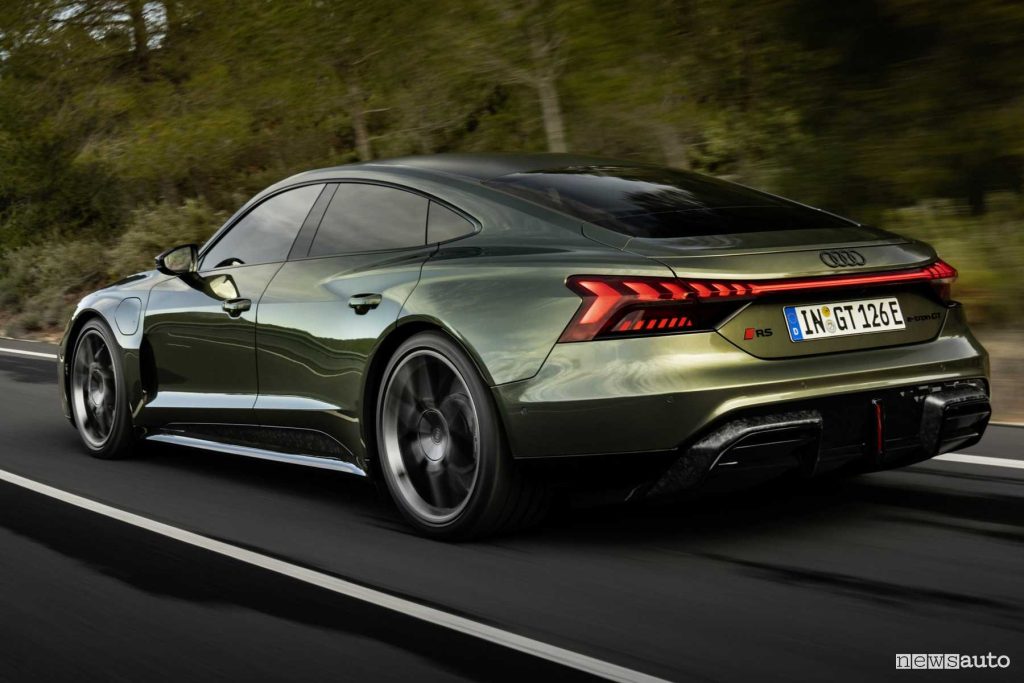



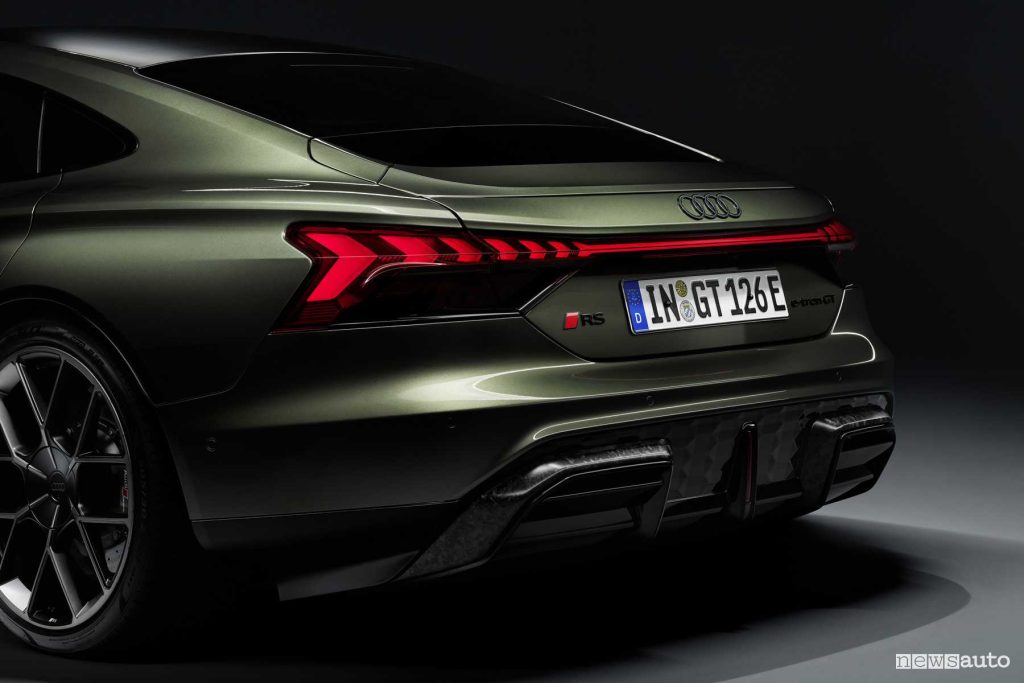
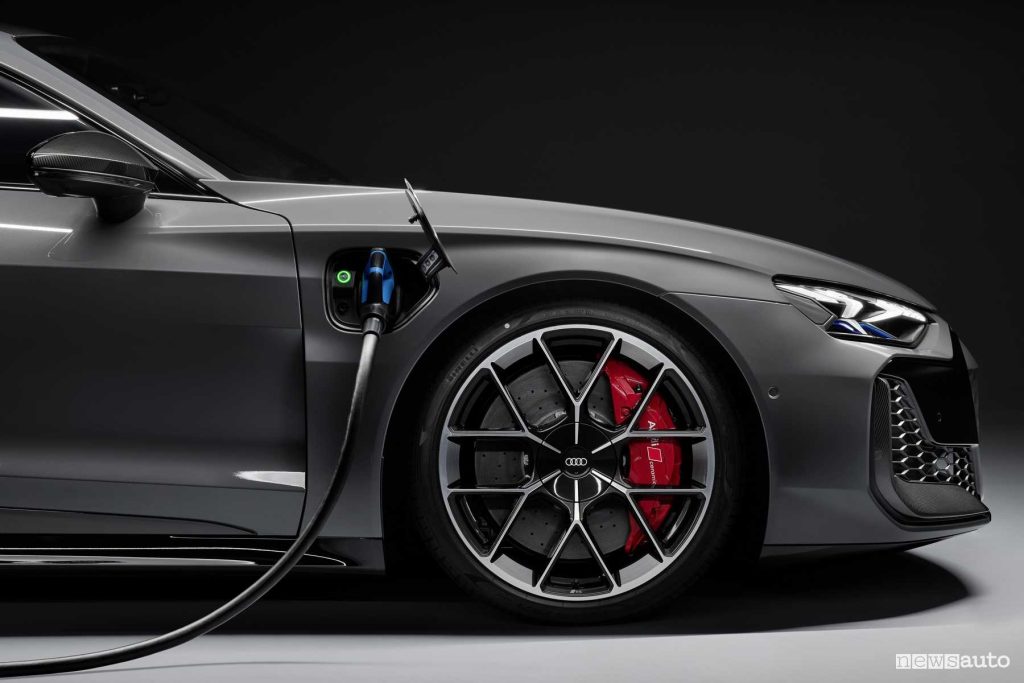



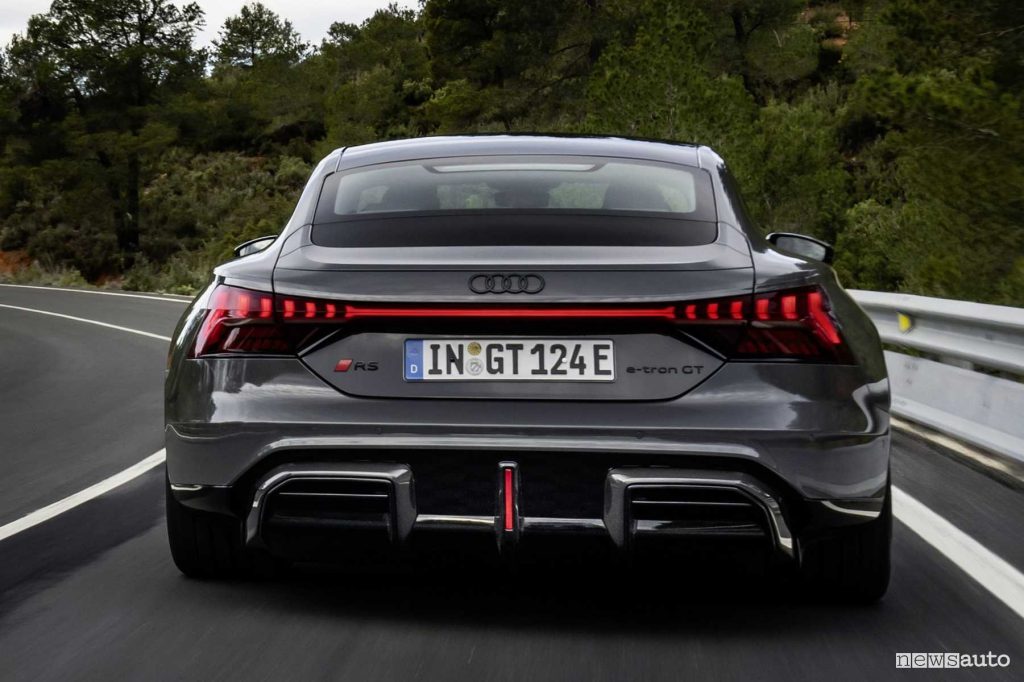




New features in the color range include green Bedford metallic for the RS e-tron GT performance and grey Metallic cloud for both RS variants. The range of alloy wheels has been updated with new designs from 20 and 21 inchesincluding 21-inch 6-twin-spoke forged wheels, inspired by the “Avus Wheel” from 1991.
Cockpit, what the interior of the e-tron GT looks like
The restyling of the Audi e-tron GT also includes updates in the passenger compartment, which include seats, steering wheel, dashboard and digital equipment, together with new inserts in carbon matte and finishes Vanadium which vary their shade depending on the ambient light. The steering wheel features a flattened crown at the top and bottom, with a red marking at 12 o’clock inspired by the world of motorsport.

In the models RS there are two additional control satellites, also red, to improve the management of driving dynamics. THE sports seats plusalready standard in the S e-tron GT, now feature a backlit logo (“S” or “RS” depending on the model) at the base of the head restraints.
For the interior coverings, sustainable materials such as Cascade fabric and the Dynamic microfibremade 45% with recycled polyester from PET bottles; the Dinamica is now also available in the variant “deep black” sportier. The mats are made in Econyla fiber obtained from the polyamide of used fishing nets and carpet waste.
Among the optional equipment, the panoramic roof a stands out adaptive transparencycharacterized by a electrochromic glass surface which can become opaque to reduce the impact of sunlight.



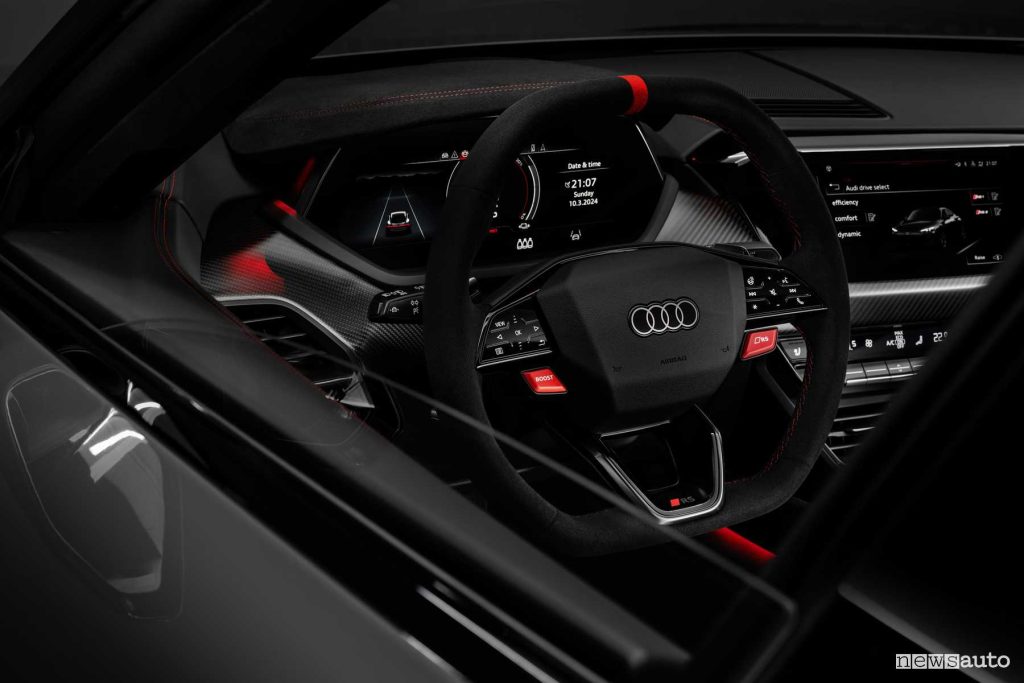
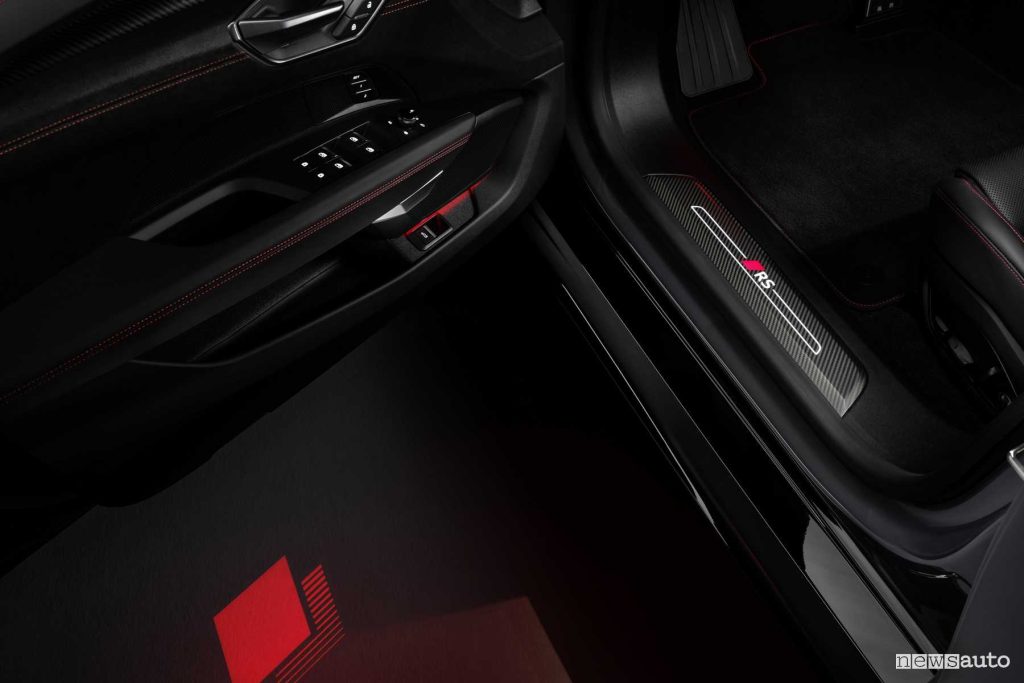

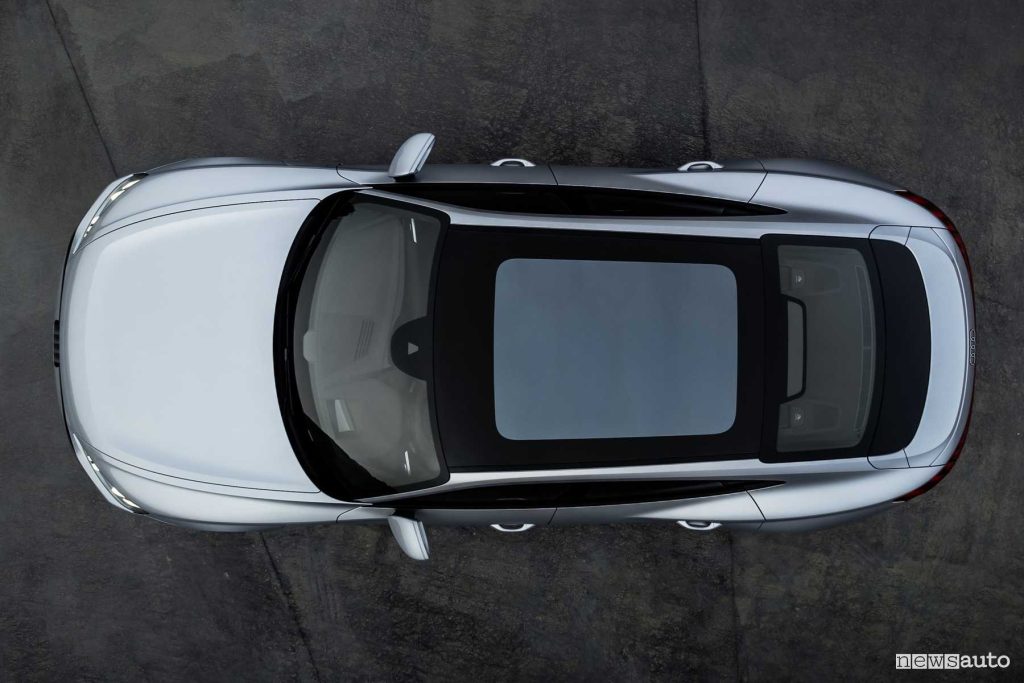
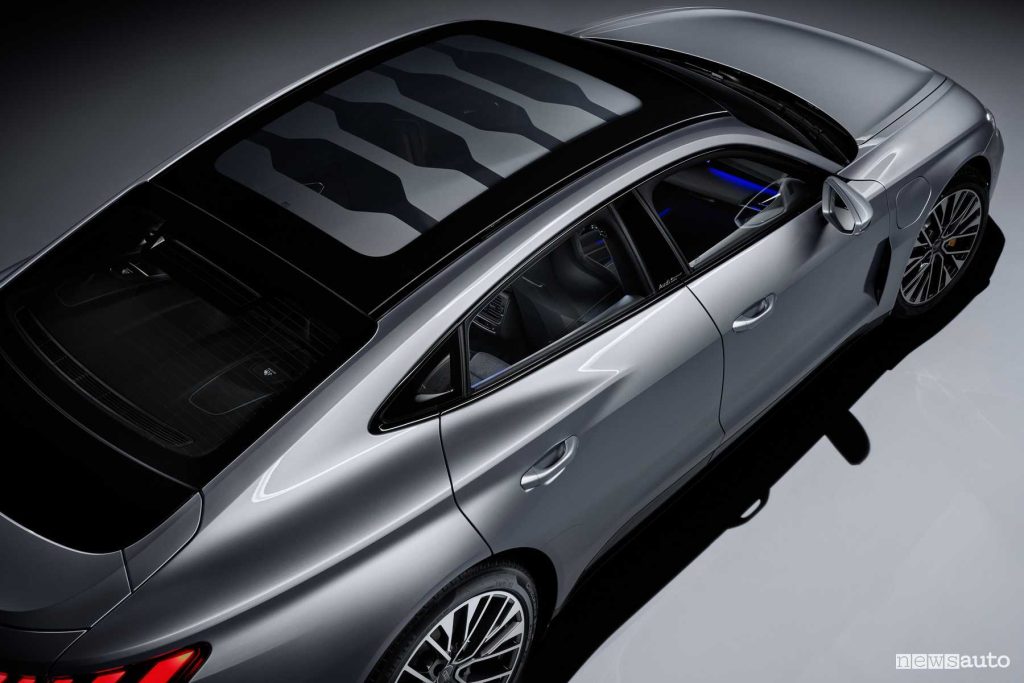

Finally, the instrument panel digital virtual cockpit plus has been updated to provide real-time temperature information drumson the maximum available charging power and on preconditioning of the accumulator while navigating to a station high power charging (HPC).
Audi e-tron electric power and performance
The new Audi e-tron GT models are equipped permanent magnet synchronous motors (PSM) on the front axle, with a power of 176 kW (239 hp) each for the S e-tron GT and RS e-tron GT. The RS e-tron GT performance offers innovative, improved power electronics on the front axle, ensuring higher discharge currents.
The electric motor developed for the rear axle is a PSM, similar in size to the RS e-tron GT and RS e-tron GT performance, with a power of 415 kW (564 hp) each. The S e-tron GT achieves a total power of 500 kW (679 hp)while the RS e-tron GT arrives at 630 kW (856 hp) and the RS e-tron GT performance pushes it up to 680 kW (925 hp)making it Audi’s most powerful production car.

All three variants guarantee impressive driving performance: the S e-tron GT accelerates from 0 to 100 km/h in 3.4 secondsthe RS e-tron GT in 2.8 seconds and the RS e-tron GT performance in solo 2.5 seconds. The S e-tron GT reaches a top speed of 245 km/hwhile the RS versions can exceed 250 km/h.
A function is also available on the RS e-tron GT and RS e-tron GT performance boost which temporarily increases the power on the steering wheel that it guarantees 95 HP additional for 10 seconds and adjustable braking energy recovery which reaches peaks of 400 kW.

The braking system has been upgraded with steel discs standard for the S e-tron GT, while the RS includes coated discs tungsten carbideoptional on the S. Audi also offers carbon ceramic discscomplete with ten-piston calipers.
Battery, autonomy and charging
Audi has improved the high-voltage (HV) battery, increasing its energy density and reducing weight by nine kilograms, now equal to 625 kilograms. The gross capacity of the battery is 105 kWh (net: 97 kWh), achieved by optimizing the two-layer cooling plate and improving the cell cooling system. These changes have increased the energy density of the cells, allowing an increase in regeneration from 290 to 400 kW.
The new battery and advanced cells, together with improved thermal management, allow the S e-tron GT to reach a maximum autonomy of 609 km in the WLTP mixed cycle, increasing by more than 100 km compared to the previous version. The e-tron GT now has a range of 597 km (+102 km)while the RS e-tron GT performance reaches i 585 km.
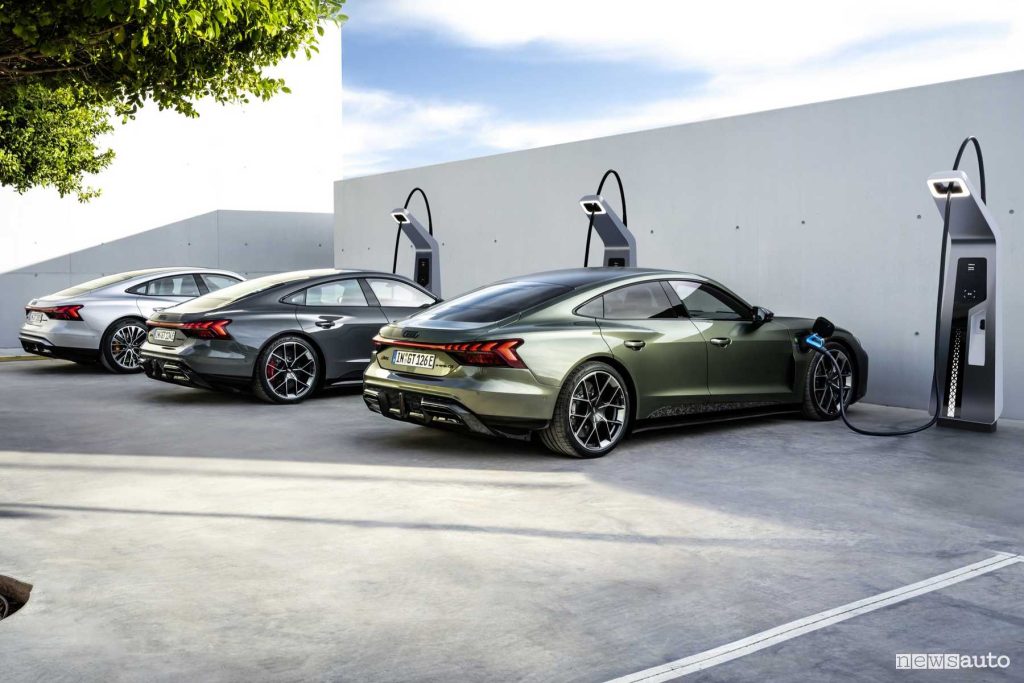
Audi has also increased the maximum charging and discharging current to 400 amps, improving the predictive thermal system and reducing the weight of the charging system. The battery can now recharge from 10 to 80% in 18 minutes to an HPC station with power of 320 kWwith an added range of 280 km in 10 minutes. Using a plug in alternating current (AC) the e-tron can be supplied with powers up to 22 kW.
Audi e-tron GT trim features
The new Audi e-tron GT is equipped with standard air suspension with a 2 chambers and 2 valves, which improves driving dynamics while maintaining comfort. An optional is also available active suspension highly innovative, which balances comfort and dynamism.

The system Audi drive select allows the driver to choose between three driving profiles: efficiency, comfort and dynamic, with the S e-tron GT also offering a individual mode configurable. RS models include two RS-specific modes (RS1 and RS2), while the RS e-tron GT performance has a performance mode optimized for circuits.
The active suspension keeps the car body stable during braking, steering and dynamic acceleration, improving steering response and grip on the road. It can neutralize the car’s body vibrations on uneven terrain and offers features such as cornering inclination, starting and braking comfort. It also includes a comfort entry function when the car is stationary, lifting up from 55 to 77 millimetres in a few seconds depending on the initial height of the car.

It is also available on request all-wheel steeringwhich improves agility at low speeds by rotating the rear wheels in the opposite direction to the fronts and increases stability at high speeds by rotating them in the same direction.
Prices, how much does the e-tron GT cost
The prices of the new Audi e-tron GT are from 128,400 euros for the S e-tron GT and from 159,400 euros for the RS e-tron GT. The top model, the RS e-tron GT performance, has a starting price of 175,400 euros.
→ S e-tron GT: €128,400
→ RS e-tron GT: €159,400
→ RS e-tron GT performance: €175,400
Photo new Audi e-tron GT
Read also:
→ All the news from the Audi brand
→ AUDI price list
→ Selected and tested electric cars to buy
→ Electric car prices and features
→ CALCULATE ELECTRIC CAR CHARGING TIME
→ Electric car charging cost
→ Video tests of ELECTRIC CARS
Testing new electric cars
https://www.youtube.com/watch?v=videoseries
→ EV Driving all about electric and hybrid cars
→ What do you think? Drop by discussions on the FORUM!
#Audi #etron #features #performance #price
